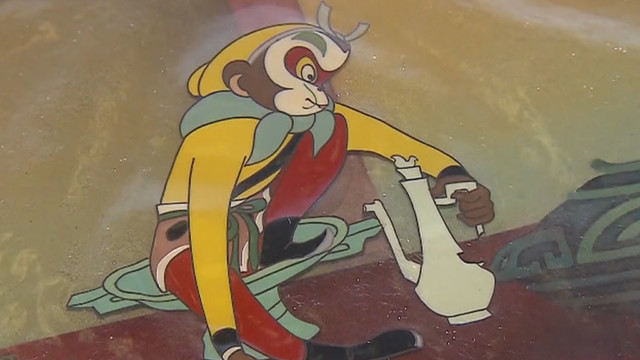It was a milestone for China 60 years ago, when its first cartoon studio was set up.
Now, the country’s animation industry is re-defining itself to meet increased competition from abroad.
CGTN’s Mi Jia-yi reports.

In 1926, China’s first animation short was born: Uproar in the Studio. The 12-minute black and white film combined both live footage and drawings.
Although the film has now been lost, it inspired early Chinese animators to experiment with all kinds of techniques, from using paper-cuts, and ink-wash painting, to paper folding, clay figures and puppets.
The industry got a boost after the Shanghai Animation Film Studio was founded in the 1950s, and peaked during the 1970s and 1980s.
Shanghai’s most famous animated films include: The Monkey King: Uproar in Heaven, Prince Nezha’s Triumph Against the Dragon, and Black Cat Sheriff.
In 30 years’ time, the studio produced more than 200 animation films.
Since the 1990s, however, China’s animation industry has faced overwhelming competition from Japanese and American rivals.
“Many foreign animations began entering China in the 1980s, especially industrialized animations. These films hit our traditional animation industry hard. For example, Disney had developed industrialized animations back in the 1950s, in which they would use one set of characters to produce several hundred cartoons,” Shi Yi, Animation Director for Shanghai Animation Film Studio said.
“This allowed them to lower their costs and maximize their profits. It was not until after the 1990s that our studio produced its first industrialized animation, the Lotus Lantern.”
Lotus Lantern’s box office reached more than $3 million within three months, and was ranked the top movie of the year. The success of the film inspired many studios to do similar work.
Private companies began taking on commercial commissions from abroad, but in recent years, more and more animators began to come up with their own ideas.
Works like The Monkey King: Hero is Back and Big Fish & Begonia have boosted confidence across the industry. Han Xiaofei has a studio of 60 animators, and says the market demand for animation nowadays is growing very fast.
“We now hire Hollywood teams, famous animation houses from Japan and Korea, and even send our work to studios in Thailand and Vietnam,” said Han Xiaofei of Shanghai Huan Ma Culture Media Company. “The demand for animations at home is very big, and sometimes our production is not fast enough to meet all that demand, so we need help from other countries too. “
Both Shi and Han agreed that China has been catching up fast in terms of cultivating animation artists and new styles. The country’s animation industry was worth more than $17 billion in 2015.
 CGTN America
CGTN America
